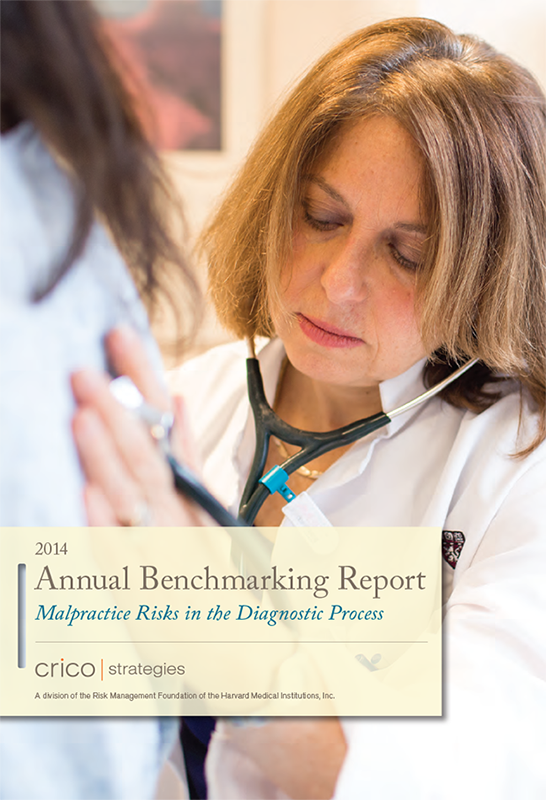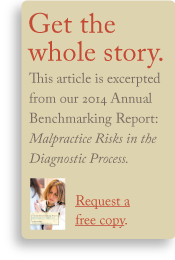Article
2014 Candello Benchmarking Report: Table of Contents
2014 Candello Report: Malpractice Risks in the Diagnostic Process
This report analyzes more than 8,400 factors from 2,685 ambulatory diagnosis-related cases. More than 82 percent of those factors have been mapped to one of the 12 steps in CRICO’s diagnostic process of care framework, from the patient noting a problem through compliance with a follow-up plan. Although each of the 12 steps deserves individual attention by patient safety improvement leaders, the report looks at three broad phases in the diagnostic process where the problems—and the potential remedies—are relatively similar.
Contents – Including some Online previews
Failures in the Diagnostic Process: The Data
Who’s involved, what goes wrong, and what is missed in 2,685 medical malpractice cases.
Analyzing the Diagnostic Process
The Candello taxonomy enables data analyses along the process of care that help identify where breakdowns most commonly occur.
- Initial Diagnostic Assessment: Assessment errors reflect process shortcuts and omissions, rather than unusual circumstances.
- Testing and Results Processing: More than one in four of the cases in this study involved breakdowns in this phase.
- Follow Up and Coordination: Referral errors are most commonly associated with a missed cancer.
Where to Look, What to Look For
Missed diagnoses reflect a cascade of aberrant decisions, system breakdowns, and failures to reset the process when evidence contradicts diagnostic certitude.
Lessons from Closed Malpractice Cases
The percent of ambulatory diagnosis-related cases closing with payment greater than $1M appears to be increasing.
What Works
Reducing the risks of diagnosis-related malpractice cases.
Related Articles
PCPs Miss Chances with MIs
Documentation Dos and Don’ts

Malpractice Risks Associated with Electronic Health Records


